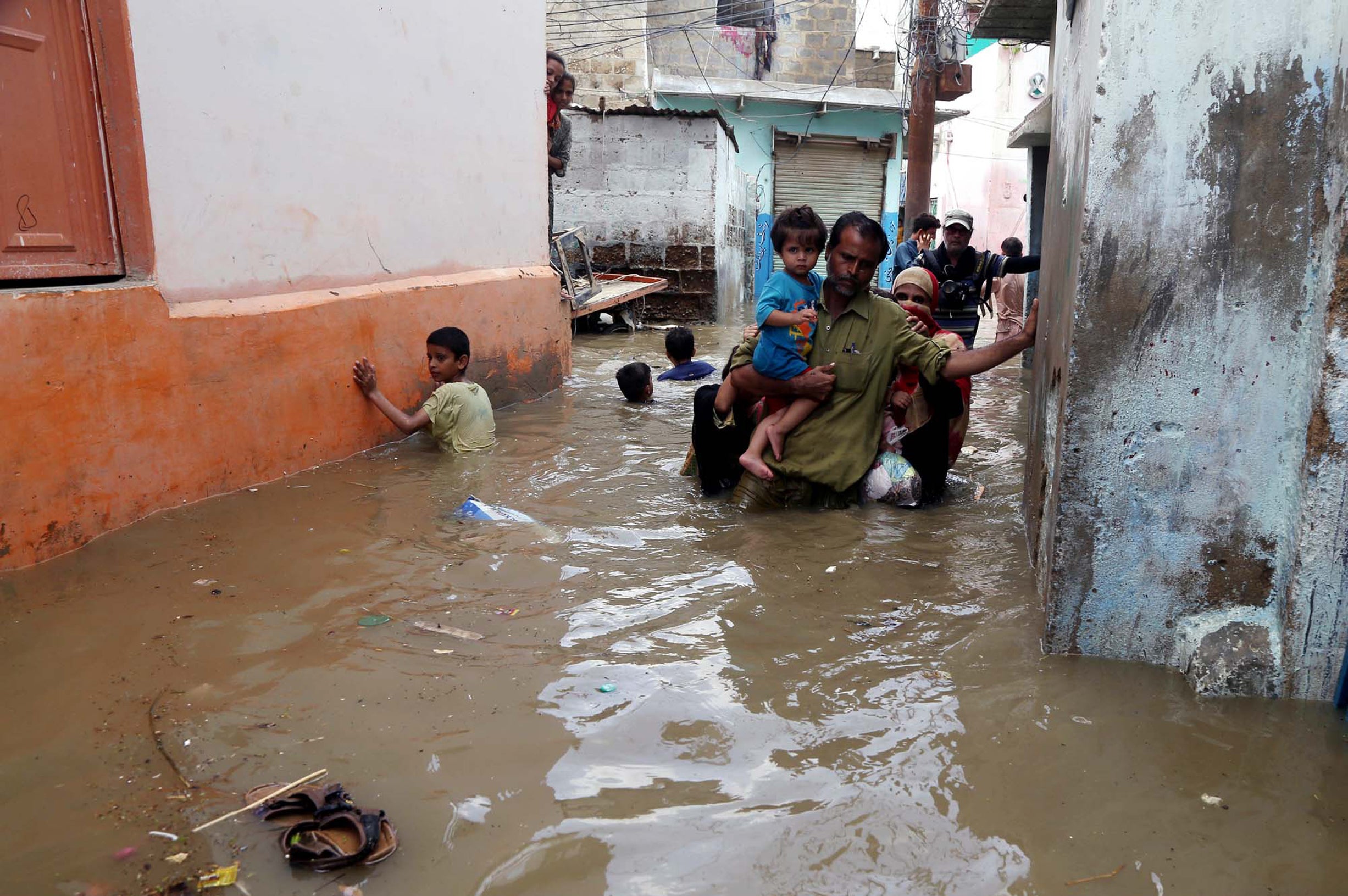
Pakistan has been devastated by heavy monsoon rains that have left millions homeless, destroyed bridges and roads and left much of the country underwater.
While the country’s planning minister Ahsan Iqbal says 45% of the country’s cotton crops have been washed away, which could spark concern among global clothing brands and retailers.
Speaking to Just Style, Dr Sheng Lu, associate professor of fashion and apparel studies at the University of Delaware, says that Pakistan is the world’s fifth largest cotton producer, with most of that exported to key garment-producing hubs such as Bangladesh and China, which make up 50% of the total.
Pakistan also exports cotton yarns primarily to China and Bangladesh and cotton fabrics to the EU and Bangladesh. And in 2021, the US accounted for 5% of Pakistan’s raw cotton exports and 3.8% of cotton fabric exports.
“As cotton is an agricultural product, the catastrophic flooding means a substantial financial loss to Pakistan’s cotton production and exports. The flooding would also worsen the world cotton shortage problem this year, resulting in the cotton price maintaining a historically high level in the months ahead,” Lu says.
How well do you really know your competitors?
Access the most comprehensive Company Profiles on the market, powered by GlobalData. Save hours of research. Gain competitive edge.

Thank you!
Your download email will arrive shortly
Not ready to buy yet? Download a free sample
We are confident about the unique quality of our Company Profiles. However, we want you to make the most beneficial decision for your business, so we offer a free sample that you can download by submitting the below form
By GlobalDataIt is also likely to complicate matters for brands and retailers seeking alternatives to Xinjiang cotton, he warns.
Bob Antoshak, North America partner at Gherzi, adds that for farmers “to be flooded out before the crop is ready for harvesting is truly horrific”.
“Pakistan is already a significant importer of cotton from the US. Assuming there’s supply available to export from the US this fall, undoubtedly Pakistani mills will look to import cotton. Problem is, because of drought, the US crop is likely to down by a third or more from its normal size.
“The bottom line is this – this year is stacking up to be one marked by rising inflation for both raw materials and finished products. Shortages in the cotton supply due to weather calamities in Pakistan, the US and elsewhere will only fuel price inflation. For mills, expect higher prices for cotton.”
Flooding impact on Pakistan garment exports
In recent months Pakistan has emerged as a major finished garment supplier to the US and has overtaken Honduras and Mexico to become the seventh largest garment supplier to the nation.
Pakistan’s textile industry recognises that today its most important customer is the apparel industry. It has worked hard to meet the needs of the sector and provides quality goods at reasonable prices.
It offers flexible minimum order quantities (MOQ), which is an important service during these difficult times but will become even more important as the apparel industry moves away from basic commodities to higher-value-added fashion.
Another point of attraction is its increasing stability. The Pakistan government has ensured a level playing field between the local textile sector and the apparel industry, working with industry to limit disruption during the height of the Covid crisis, while still making every effort to limit new outbreaks.
The government has worked to solve electric power shortages and allowed duty-free access to new machinery. And its policies encourage factory development both by bringing new people into the industry but also by encouraging existing factories to expand.
And, after China, it is still the cheapest place for US buyers to source apparel from on a per-unit basis.
Lu points out: “Notably, before the flood, Pakistan was regarded as one of US fashion companies’ leading emerging apparel sourcing destinations, especially for cotton apparel products. In the first half of 2022, the value of US cotton apparel imports from Pakistan surged by nearly 50%, much higher than the world average.”
Antoshak warns the flooding devastation and its subsequent impact on factory worker displacement and logistics will have an effect on garment exports, though this may not be seen for a few months yet.
“The flood has the potential to drop Pakistan from a top suppliers position temporarily, and we’ll have to wait to see if that’s the case when trade statistics are published for August in about 60 days.”



